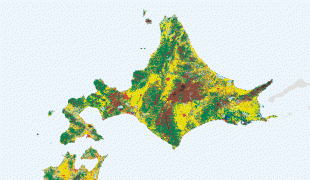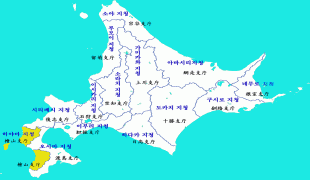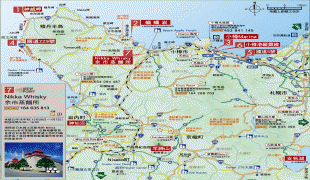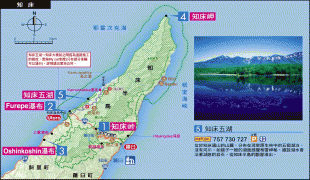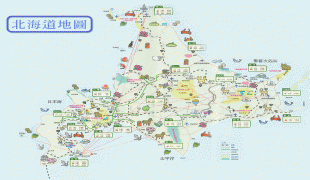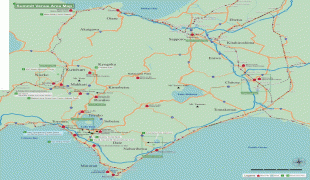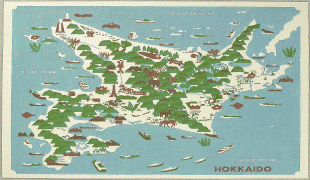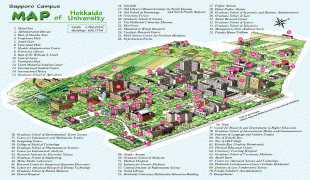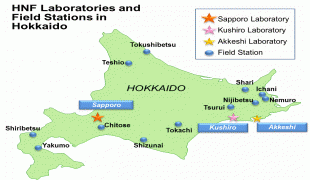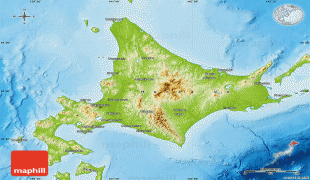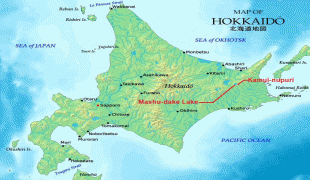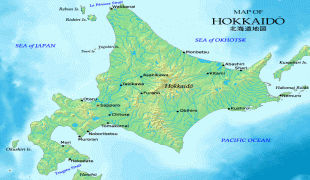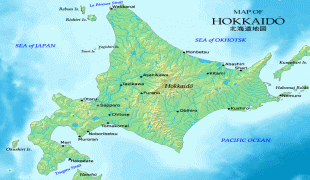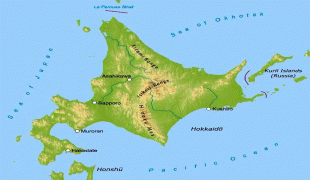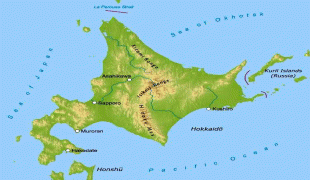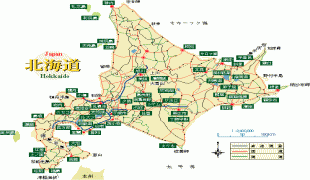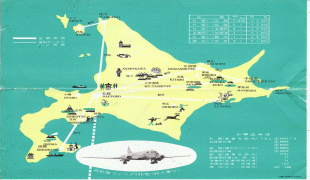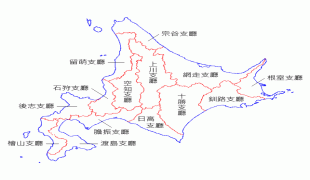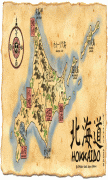Hokkaido
 |
The largest city on Hokkaidō is its capital, Sapporo, which is also its only ordinance-designated city. Sakhalin lies about 43 kilometers (26 mi) to the north of Hokkaidō, and to the east and northeast are the Kuril Islands, which are administered by Russia, though the four most southerly are claimed by Japan. Hokkaidō was formerly known as Ezo, Yezo, Yeso, or Yesso. Although there were Japanese settlers who had ruled the southern tip of the island since the 16th century, Hokkaido was considered foreign territory that was inhabited by the indigenous people of the island, known as the Ainu people. While geographers such as Mogami Tokunai and Mamiya Rinzō explored the island in the Edo period, Japan's governance was limited to Oshima Peninsula until the 17th century. The Japanese settlers began their migration to Hokkaido in the 17th century, which often resulted in clashes and revolts between Japanese and Ainu populations. In 1869, following the Meiji Restoration, Ezo was annexed by Japan under on-going colonial practices, and renamed Hokkaido. After this event, Japanese settlers started to colonize the island. While Japanese settlers colonized the island, the Ainu people were dispossessed of their land, forced to assimilate, and aggressively discriminated against by the Japanese settlers.
When establishing the Development Commission, the Meiji government decided to change the name of Ezochi. Matsuura Takeshirō submitted six proposals, including names such as Kaihokudō (海北道) and Hokkaidō (北加伊道), to the government. The government eventually decided to use the name Hokkaidō, but decided to write it as 北海道, as a compromise between 海北道 and 北加伊道 because of the similarity with names such as Tōkaidō (東海道). According to Matsuura, the name was thought up because the Ainu called the region Kai. The kai element also strongly resembles the On'yomi, or Sino-Japanese, reading of the characters 蝦夷 (on'yomi as [, カイ], kun'yomi as [, えみし]) which have been used for over a thousand years in China and Japan as the standard orthographic form to be used when referring to Ainu and related peoples; it is possible that Matsuura's kai was actually an alteration, influenced by the Sino-Japanese reading of 蝦夷 Ka-i, of the Nivkh exonym for the Ainu, namely Qoy or.
In 1947, Hokkaidō became a full-fledged prefecture. The historical suffix 道 (-dō) translates to "prefecture" in English, ambiguously the same as 府 (-fu) for Osaka and Kyoto, and 県 (-ken) for the rest of the "prefectures". Dō, as shorthand, can be used to uniquely identify Hokkaido, for example as in 道道 (dōdō, "Hokkaido road") or 道議会 (Dōgikai, "Hokkaido Assembly"), the same way 都 (-to) is used for Tokyo. "Hokkai-do-ken" (literally "North Sea Province Prefecture") is, therefore, technically speaking, a redundant term, although it is occasionally used to differentiate the government from the island. The prefecture's government calls itself the "Hokkaidō Government" rather than the "Hokkaidō Prefectural Government".
With the rise of indigenous rights movements, there emerges a normative notion that Hokkaido must have an Ainu language name. Whichever Ainu phrase is chosen, its original referent is critically different from the large geographical entity, however. The phrase aynumosir (アイヌモシㇼ) has been a preferred choice among Japanese activists. Its primary meaning is the "land of humans", as opposed to the "land of gods" (kamuymosir). When contrasted with sisammosir (the land of the neighbors, often pointing to Honshu or Japanese settlements on the southern tip of Hokkaido), it means the land of the Ainu people, which, depending on context, can refer to Hokkaido, although from a modern ethnolinguistic point of view, the Ainu people have extended their domain to a large part of Sakhalin and the entire Kuril Islands. Another phrase yaunmosir (ヤウンモシㇼ) has gained prominence. It literally means the "onshore land", as opposed to the "offshore land" (repunmosir), which, depending on context, can refer to the Kuril Islands, Honshu, or any foreign country. If the speaker is a resident of Hokkaido, yaunmosir can refer to Hokkaido. Yet another phrase akor mosir (アコㇿモシㇼ) means "our (inclusive) land". If uttered among Hokkaido Ainus, it can refer to Hokkaido or Japan as a whole.
Map - Hokkaido
Map
Country - Japan
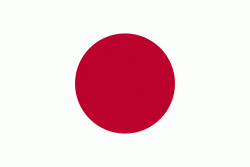 |
 |
| Flag of Japan | |
Japan is the eleventh most populous country in the world, as well as one of the most densely populated and urbanized. About three-fourths of the country's terrain is mountainous, concentrating its population of 124.8 million on narrow coastal plains. Japan is divided into 47 administrative prefectures and eight traditional regions. The Greater Tokyo Area is the most populous metropolitan area in the world, with more than 37.2 million residents.
Currency / Language
| ISO | Currency | Symbol | Significant figures |
|---|---|---|---|
| JPY | Japanese yen | ¥ | 0 |
| ISO | Language |
|---|---|
| JA | Japanese language |






